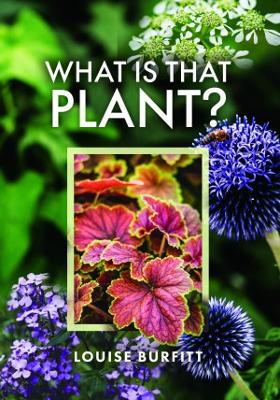Originally posted on my blog Nonstop Reader.
What is that Plant? is a well put together beginner friendly plant guide and resource by Louise Burfitt. Due out 28th April 2023 from Pen & Sword on their White Owl imprint, it's 232 pages and will be available in hardcover and ebook formats.
Gardening provides so many positive benefits: exercise, improved mental & physical health, beauty from the scents and colours of the plants we maintain, serenity, distraction from the stresses of a hectic and often confusing daily life. A well maintained garden is a thing of beauty and joy. Identifying the component plants in a garden is not always easy or straightforward. Perhaps a lovely plant has caught one's eye at a garden centre, how to know where to plant and how to care for it in the home garden? This is a useful resource guide to identifying and vetting plants common in gardens in the UK (and elsewhere).
The book is divided into four main sections: perennials & bulbs, self-seeders & spreaders, shrubs grasses trees & climbers, and weeds & wildflowers. Each section contains many individual listings for diverse plant profiles which include: common & botanical (Latin) names, highlighted text box with profile info (flowering season, habit, conditions, origins, toxicity, etc), and a description written in accessible layman language. Every profile listing is also accompanied by one or more unobstructed colour photos showing foliage, blooms, and other features. Pictured varietal names are also included, where applicable. Latin/botanical names follow the newest agreed nomenclature rulings and there were some surprises for me contained in the book (rosemary has been changed from R. officinalis to Salvia rosmarinus, which I, for one, missed the memo).
The author has also included an abbreviated resource and bibliography/links list, vocabulary, and cross referenced index.
Four and a half stars. This is a simple, no-frills guide and resource which, although slanted toward gardeners in the UK will have relevance for readers located elsewhere. It would also make a superlative selection for public or school library acquisition, allotment library, gardening groups, and activity groups.
Disclosure: I received an ARC at no cost from the author/publisher for review purposes.
Reviewed by annieb123 on
Reading updates
- 25 February, 2023: Started reading
- 25 February, 2023: Finished reading
- 25 February, 2023: Reviewed
